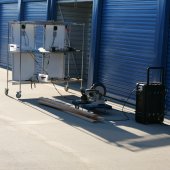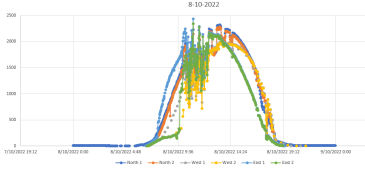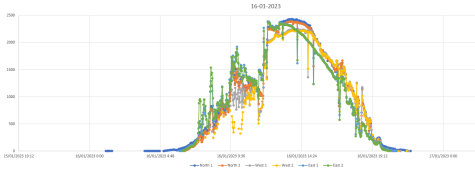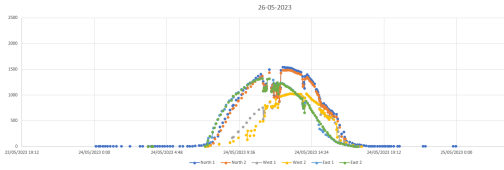HarryN
Solar Addict
I have used small systems like this to power my off grid shop for several years.
The reason that I can get away with it is that I have some panels on the racks that allow pointing them at the sun early in the morning and late in the afternoon. When I had the minivan, I had 300 watts on top of it, now I just have 150 watts on the explorer.
In the photo it is just capturing the late afternoon sun.
The ability to capture the sunlight all day long is critical to how it all works with so little battery storage.
It has battery SOC monitoring but I just glance at it - don't capture it for trending.
Very roughly what I see is that if I were using a fixed configuration based on how this setup works, I would face:
~ 25% toward the early morning sun
~ 25% facing roughly up
~ 50% facing the very late in the day sun
Yes I know it is very simplistic but it works.
The reason that I can get away with it is that I have some panels on the racks that allow pointing them at the sun early in the morning and late in the afternoon. When I had the minivan, I had 300 watts on top of it, now I just have 150 watts on the explorer.
In the photo it is just capturing the late afternoon sun.
The ability to capture the sunlight all day long is critical to how it all works with so little battery storage.
It has battery SOC monitoring but I just glance at it - don't capture it for trending.
Very roughly what I see is that if I were using a fixed configuration based on how this setup works, I would face:
~ 25% toward the early morning sun
~ 25% facing roughly up
~ 50% facing the very late in the day sun
Yes I know it is very simplistic but it works.












